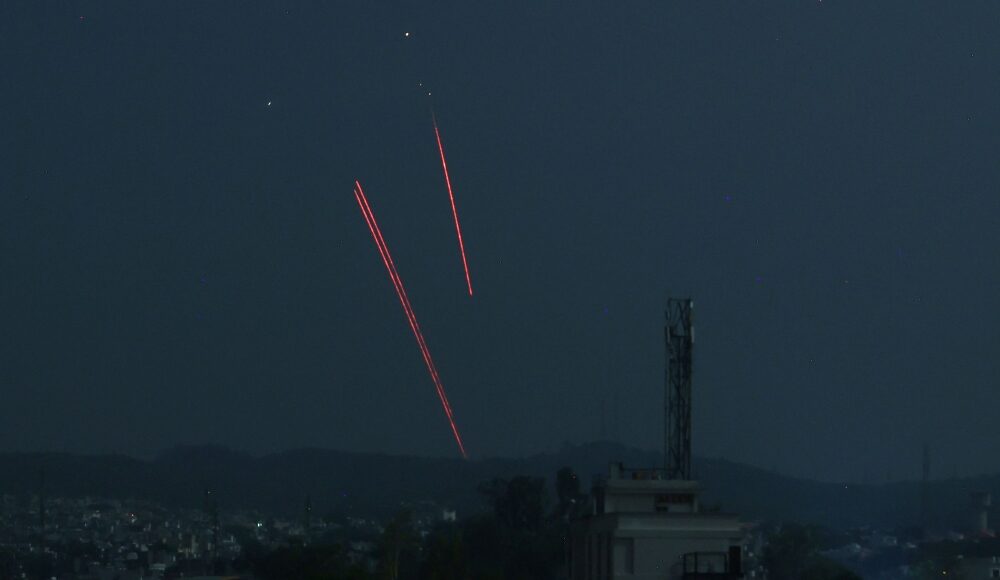MAY 11 — Without warning or ceremony, the strategic geography of South Asia was quietly rewritten. Not with shock and awe, but with silence and symmetry.
What occurred in the airspace between India and Pakistan was not just an aerial engagement — it marked the dawn of a new strategic grammar, where data, not dogfights, dictates dominance.
Despite mobilising nearly 180 aircraft along its western frontier, the Indian Air Force (IAF) did not cross the 300km threshold toward the Line of Control (LoC). This was no tactical hesitation. It was a strategic recalibration.
The skies over Kashmir, once contested with raw firepower, had become a digital domain — monitored, mapped, and manipulated by invisible systems. And at the heart of this transformation stood the steady, subtle hand of China’s deft transfer of aerial technology.
A shift from muscle to mind
Rewind to 2019: India’s Balakot airstrike showcased a muscular projection of power. But six years on, the skies no longer reward muscle. They reward method.
Pakistan’s air defence, enhanced by China’s J-10C fighters operating in stealth mode, Erieye early warning aircraft, and satellite-linked targeting systems, had fused into a single coherent ecosystem.
Without firing a single retaliatory shot, the Rafale — India’s much-vaunted French-made fighter — was electronically ambushed, neutralised before it could see its enemy, let alone shoot.
The Rafale, worth over USD 250 million and equipped with the formidable Spectra electronic warfare suite, was rendered obsolete in a sky re-scripted by China’s doctrine of asymmetric aerial warfare. In the words of an IAF source, “We weren’t just outflanked. We were out-thought.”
From platforms to patterns
India’s air doctrine had focused on acquiring prestige platforms — the Rafale, the Su-30MKI, the MiG-29. But what unfolded was not a failure of aircraft; it was a failure of imagination.
Pakistan’s kill chain — built with Chinese inputs — was decentralised, fast, and precise. PL-15 missiles, capable of hitting targets from 300km away, did not require visual confirmation.
AI-linked satellite targeting meant the Indian aircraft were hunted without radar exposure. In a phrase: the battlefield had become borderless, invisible, and instantaneous.
Trails from an Indian air defence system are seen above Jammu during a Pakistani strike on May 9, 2025. — AFP pic
China’s fingerprints, not its flag
This was not an overt Chinese intervention. There were no J-20s, no PLA insignia. Yet every vector — from sensors to missiles — carried the DNA of Chinese defence industrial capacity.
The symmetry of the operation reflected decades of Beijing’s quiet investment in digital warfare, electromagnetic dominance, and AI-integrated aerospace command.
This was a masterclass in “strategic invisibility.” While the world looked for signs of direct involvement, China orchestrated a symphony without ever taking the stage.
Strategic caution replaces strategic clarity
For India, the consequences are psychological and strategic. The IAF is now cautious, flying within a 300km safety margin. The logic is cold: when you cannot see what is tracking you, you retreat into zones of plausible denial.
Modi’s administration has avoided a wider escalation. France, for its part, remains diplomatically muted as Dassault’s stock wavers. Meanwhile, Chinese defence firms — from AVIC to CETC — have quietly gained market capital. Soft power by hard precision.
Why Asean should take note
This moment is not just about India and Pakistan. It is a warning shot across South-east Asia. The skies are no longer ruled by numbers, but by nodes.
For Asean, which has long focused on acquiring platforms — submarines from France, fighter jets from the US, drones from Turkey — the lesson is clear: without integration, data fusion, and digital coordination, these tools are expensive ornaments in a theatre already owned by others.
With growing digital militarisation shaping the Mekong subregion and other critical corridors of infrastructure and information, Asean needs to revisit its foundational defence assumptions. It must ask:
Are our systems interoperable?
Can we detect invisible threats?
Do we control our data, or is it already compromised?
The rules have changed, quietly
What China demonstrated in South Asia was not a new weapon, but a new war logic — an architecture of information, automation, and ambiguity.
In a region where territorial disputes, grey-zone tactics, and proxy alignments are on the rise, Asean cannot afford to be doctrinally stagnant. The age of flashy arsenals is over. What matters now is coherence, connectivity, and cognitive warfare.
India’s setback is not just military — it is epistemological. It reveals the cost of clinging to 20th-century airpower logic in a 21st-century strategic environment.
China, without flying its flag, has shown the region what the future of conflict looks like. And that future is already here.
*Phar Kim Beng, PhD, is professor of Asean Studies at the International Islamic University Malaysia (IIUM). He writes frequently on strategic and geopolitical developments across the Indo-Pacific.
**This is the personal opinion of the writer or publication and does not necessarily represent the views of Malay Mail.





